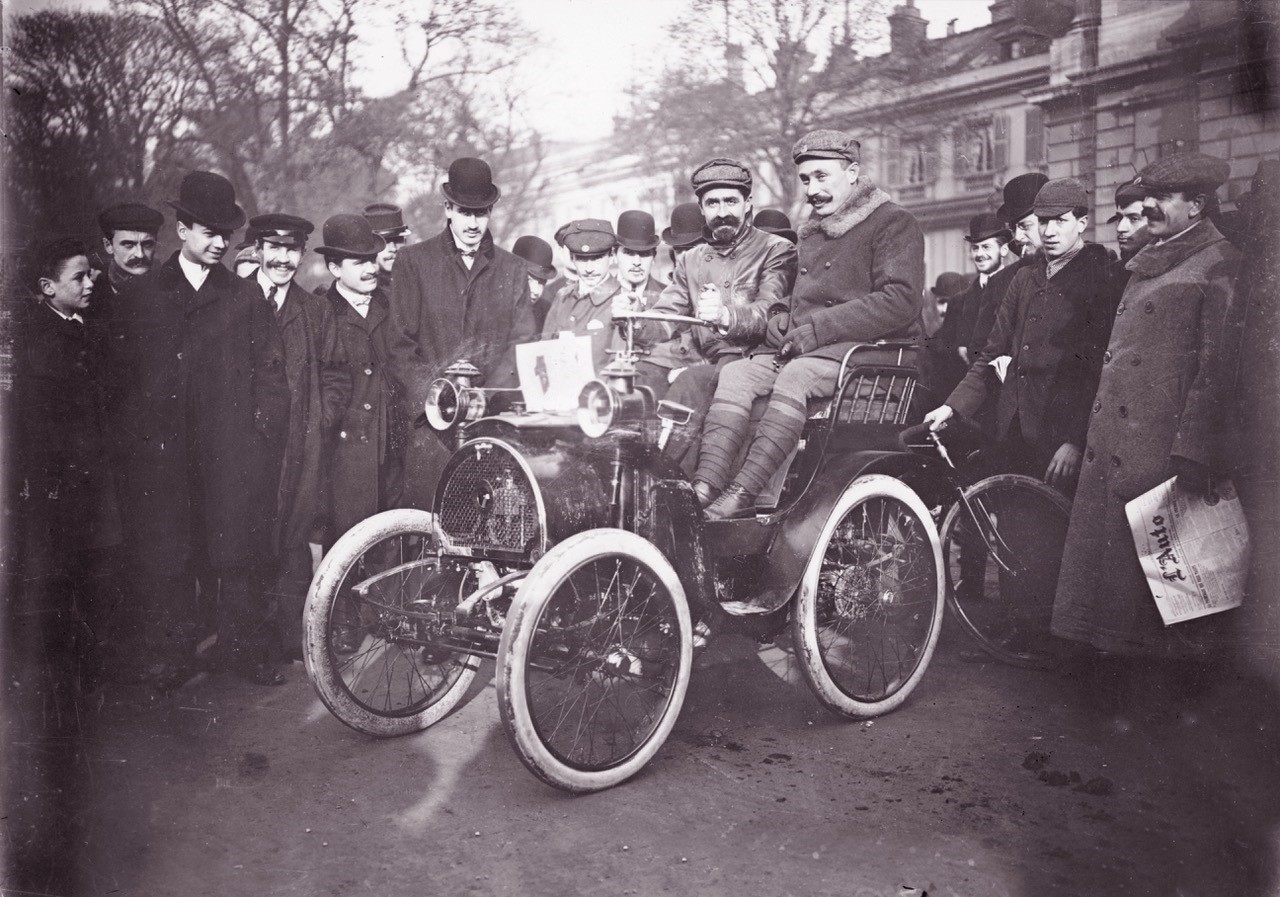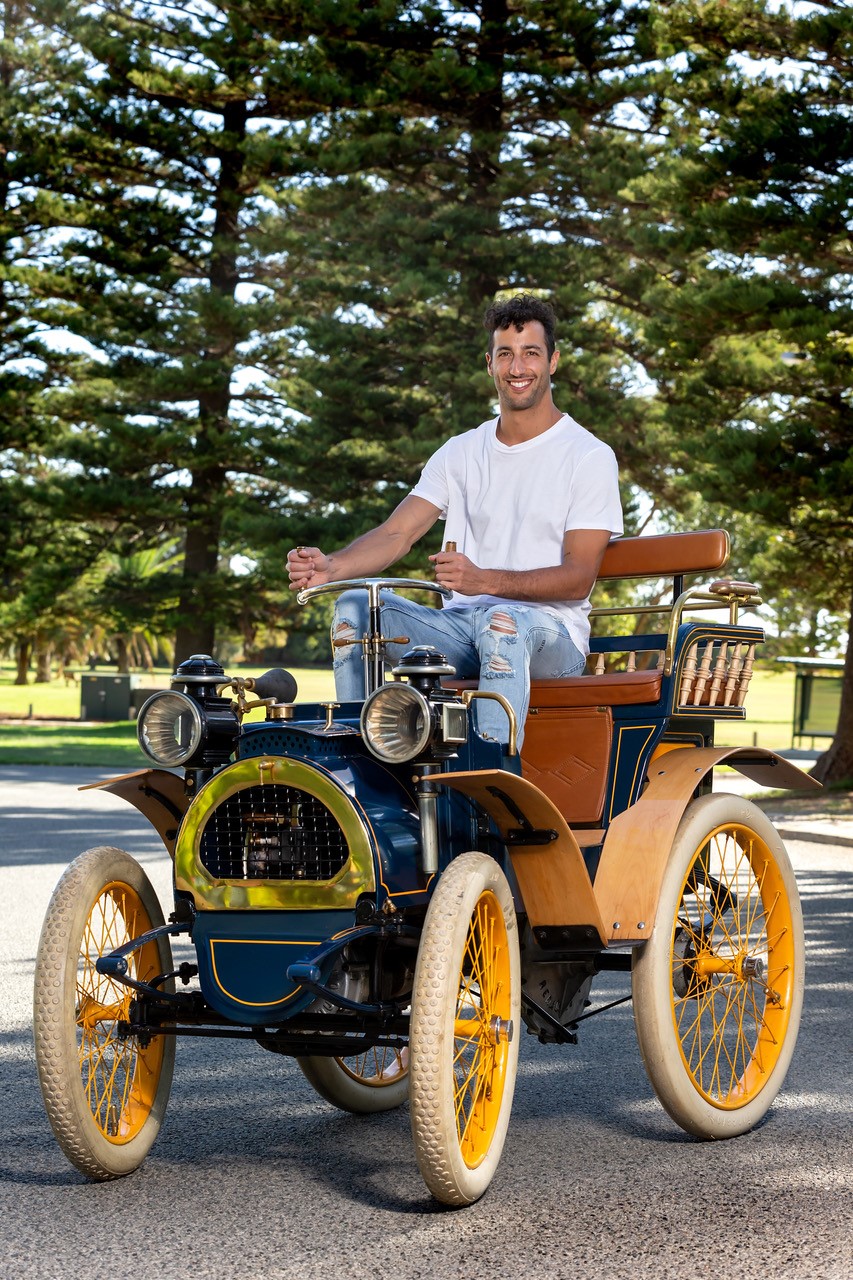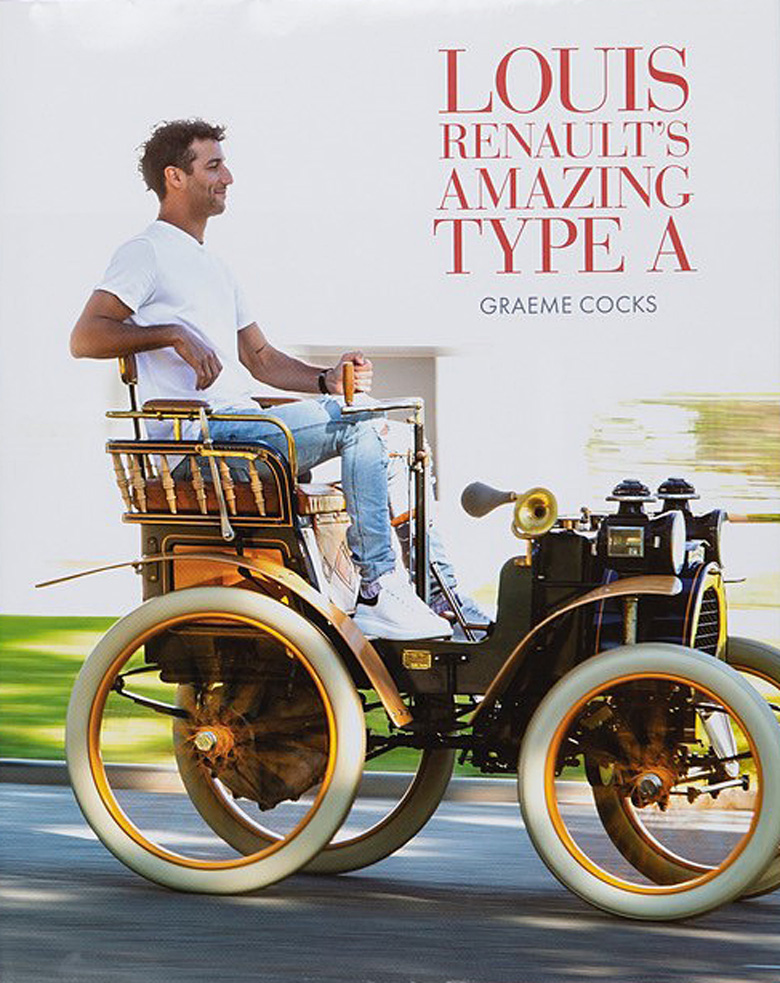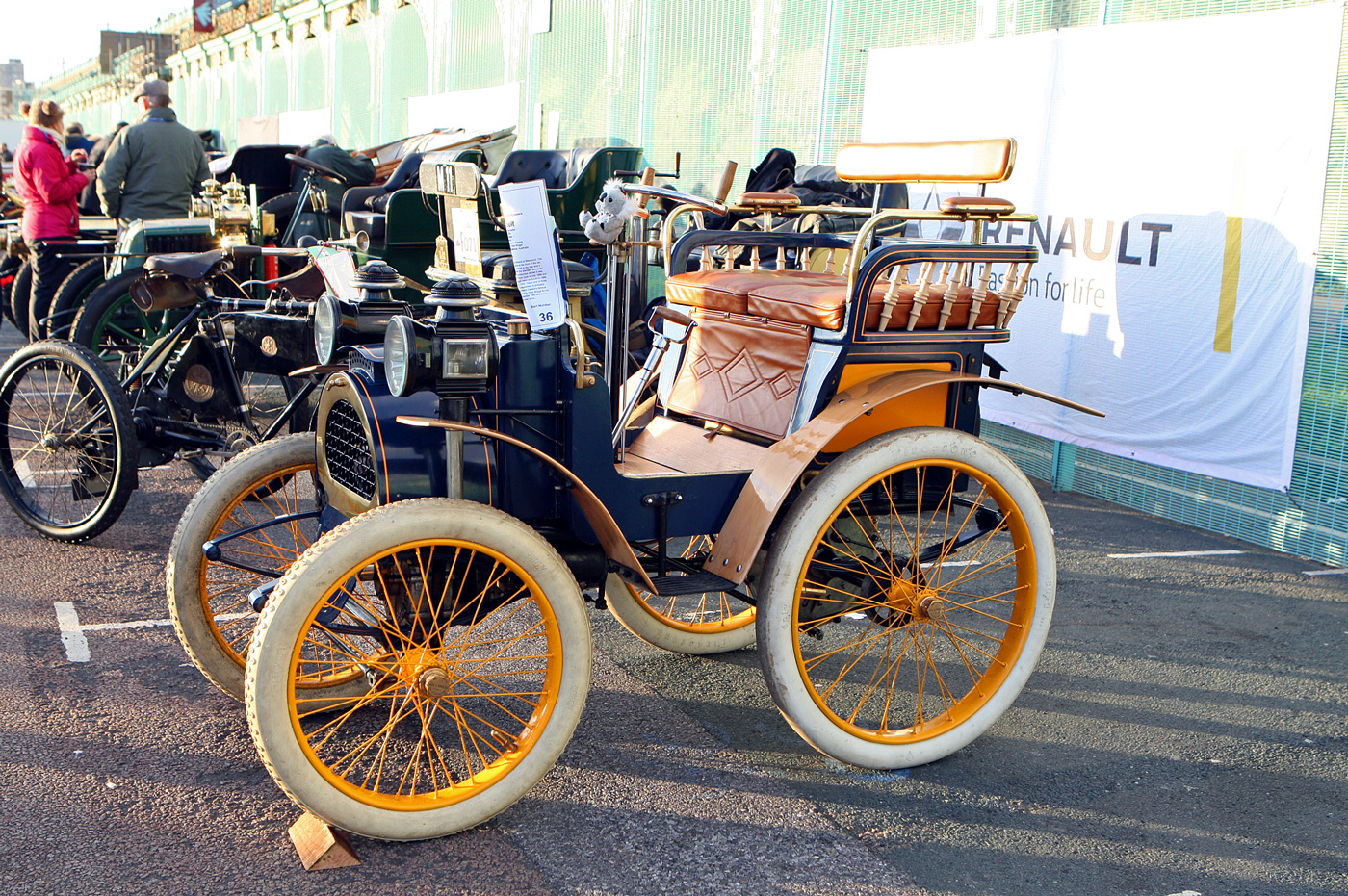Review by Pete Vack
In a colorful, imaginative and creative manner, author and historian Graeme Cocks brings to life the story of Renault’s Type A – the first car to feature a direct drive with the engine, clutch, transmission and differential in line. (read Two Old Renaults). It all began in that perhaps not so humble woodshed in the Renault family’s back yard, as you probably ‘heard tell about’ many times. (Renault’s family owned a button-making factory and were well-off.)
From the cover, with a brilliant photo of Australian Red Bull Renault F1 driver Daniel Ricciardo at the tiller of the Type A, (along with an interview) to the many historical black and white photos from the Renault archives, to full color drawings of the remarkable three speed transmission, Cocks describes the times, the people, the excitement and the challenges facing Louis Renault and his automobile. While most of us get cranked up over newer classics, Cocks, admittedly a fan of Veteran era cars, shares with us his enthusiasm via a well-researched text, well-chosen photos, and a vibrant layout. For anyone with a mechanical bent, La Bell Époque in Paris must have been a very exciting time to be alive. It certainly was for Louis Renault, who often complained that “All schools were prisons, all workshops were heaven.”

De Dion-Bouton: Women drove them, men raced them, Louis Renault bought one. He borrowed the engine and made his own car.
The author sets the background, taking us back to the turn of the century in a delightful fashion, showing us the difference between the very light three wheelers—mostly De Dion Boutons – that were tearing up the boulevards of Paris, vs. the much larger cars built for carrying royalty in style. The problem-and the opportunity-was that there were few cars that bridged that gap. What was needed was a small, four wheeled vehicle that was lightweight yet affordable, yet those few that were available had complex drive mechanisms. Enter Louis Renault and his three-speed gearbox and shaft drive to a differential.

As Cocks writes, “This image is often described as Louis Renault in the driver’s seat of a Voiturette Renault 1 3/4 hp in 1899. However, the gentleman on the right has a copy of L’Auto newspaper which was published as the L’Auto-Velo before 1903.’
The story of how Louis Renault first made a car in 2 ½ months and sold several on its maiden run on December 25th 1899 is the stuff of legends. Cocks takes special care to consult all available – and often contradicting accounts when reciting the historic beginnings of the company. Says Cocks, “This book makes extensive use of as many early sources as possible.” We find that apparently, the decision to become a car manufacturer was not pre-ordained; first Louis created the transmission with thoughts of patenting it, then the car was built and that was to also be patented and the patents sold, but it soon became apparent that they were onto something bigger and instead built a factory to produce the Type A.
The first Renault established the company, was very successful, even while Louis almost lost control of his invention to other manufacturers who blatantly copied his design. (He won his court case in 1905 and received monies from many major manufacturers until 1914, helping finance the expansion of the Renault factory.) Louis then lost his partner and brother Marcel in the 1903 Paris to Madrid race, and yet at the same time established one of the largest and longest-lived automobile companies on earth. All this before he turned 25.
But the real protagonist of the story is Peter Briggs’ Type A, the one hundredth and tenth Type A built, bought from a French museum in 1983, and finally properly restored to take part in the 2017 London to Brighton run. And therein lies a particularly frustrating and enlightening story of one car’s attempt to finish the event. Briggs is from Australia, and that is the connection with Australian journalist Graeme Cocks, who teamed with restorer Lindsay Taylor to get Chassis 110 to and through the event. Cocks also describes driving the Briggs’ Type A, a feat accomplished with a good deal of trepidation. After the restoration was completed, the big test drive would be half way around the world at the 2017 Brighton Run, which is no piece of cake for a vehicle built in 1900. Cocks, on the scene, tells us of the heartbreak and breakdowns.

F1 Renault driver Daniel Ricciardo tries the 1.75 hp Renualt, finding it slower but scarier than his 950 hp F1 car.
Cocks devotes a chapter to the early racing successes of the Renault brothers who found that marketing was as important as building the car. The appendix lists the remaining Type A Renaults and describes two of them in detail. There is a good index, sources are noted within the text, and an acknowledgements page. The font is a little too small and light for our comfort but that is our only criticism of a very entertaining and informative book. Got us cranked up, to be sure, and this book comes highly recommended!
www.motoringpast.com.au
Louis Renault’s Amazing Type A by Graeme Cocks
Motoring Past, Australia
Pages 208 color and black and white, softbound, 11.75 by 9 inches
Soft cover, 208 pp, full color throughout, 100s of photographs, 285mm W x 225mm H x 17mm D
ISBN 9 780987 280879 $45 Australian
Order here
https://www.motoringpast.com.au/product-page/louis-renault-s-amazing-type-a
VeloceToday was there; Jonathan Sharp photographed the Briggs’ Type A at Brighton, 2017.
Here are the stories:



